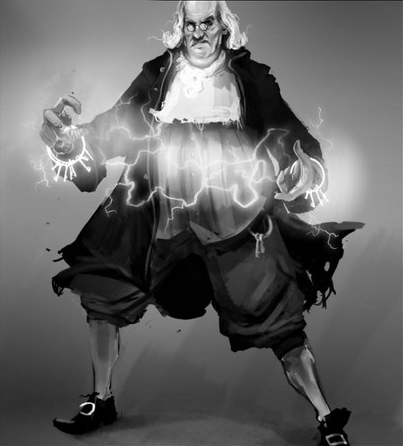In third grade we have the fortune of studying one of the most fascinating people in American history--Benjamin Franklin. Rather than a traditional biography study, though, we jumped right in with a survey of many of his incredible inventions and how they led to modern manifestations. For example, did you know that Benjamin Franklin invented the first odometer to track the mileage he put on his horse buggy when he was the post man of Philadelphia?
Then we honed in his most iconic discovery and the famous kite experiment. After studying the historical context and relevance of the experiment, we decided to build our own kites! A couple students have already finished. The rest will be finished up next week.
It was important for students to clarify that Franklin did not "discover" electricity. He proved that lightning was a form of electricity. That allowed him to then think about controlling it in order to protect tall buildings, and that is how the lightning rod was born.
As part of our literature connection, we are also reading the rather revealing alternative history of Benjamin Franklin's life as told by his mouse Amos in the book, Ben and Me by Robert Lawson. Turns out there's more to the story than anyone knew!
Then we honed in his most iconic discovery and the famous kite experiment. After studying the historical context and relevance of the experiment, we decided to build our own kites! A couple students have already finished. The rest will be finished up next week.
 |
| Parents, we will NOT be flying these in a lightning storm! |
As part of our literature connection, we are also reading the rather revealing alternative history of Benjamin Franklin's life as told by his mouse Amos in the book, Ben and Me by Robert Lawson. Turns out there's more to the story than anyone knew!
























